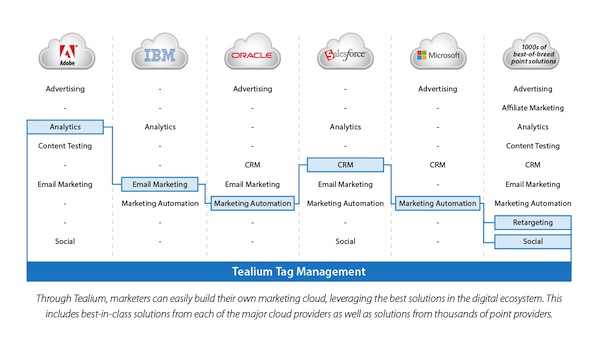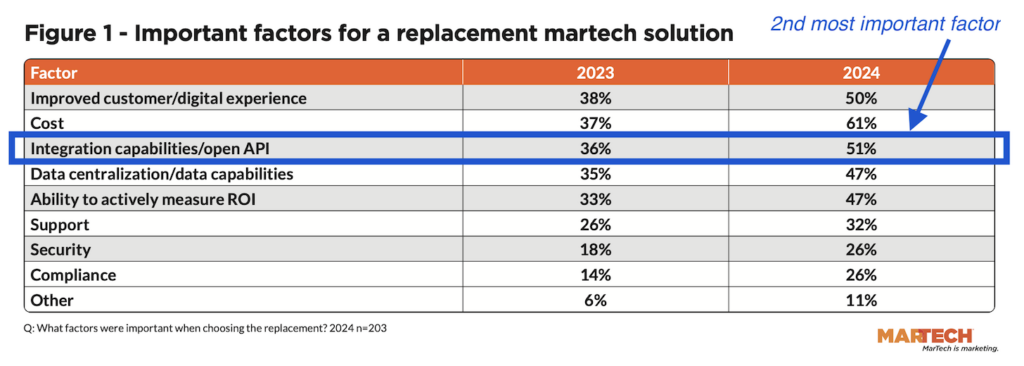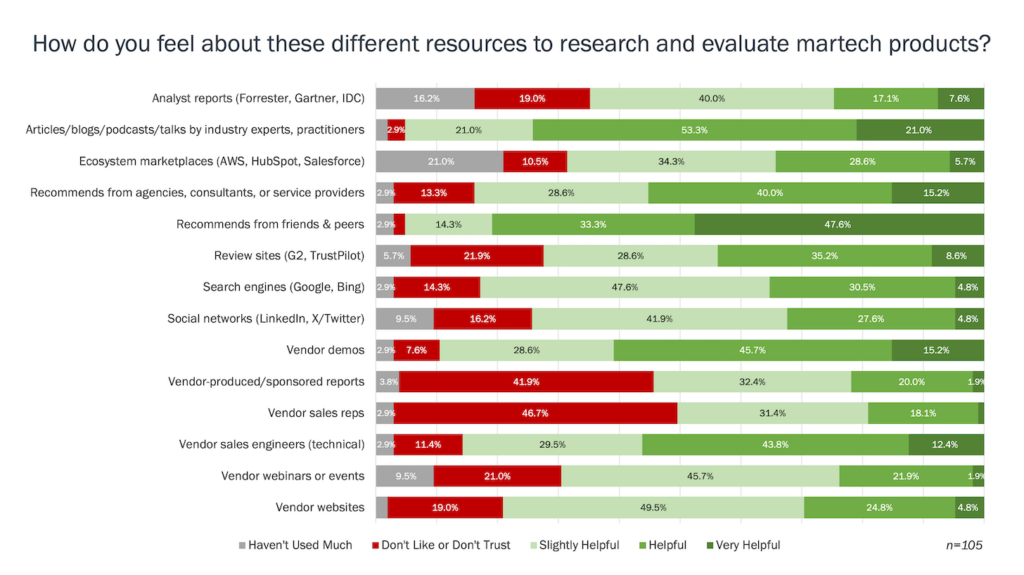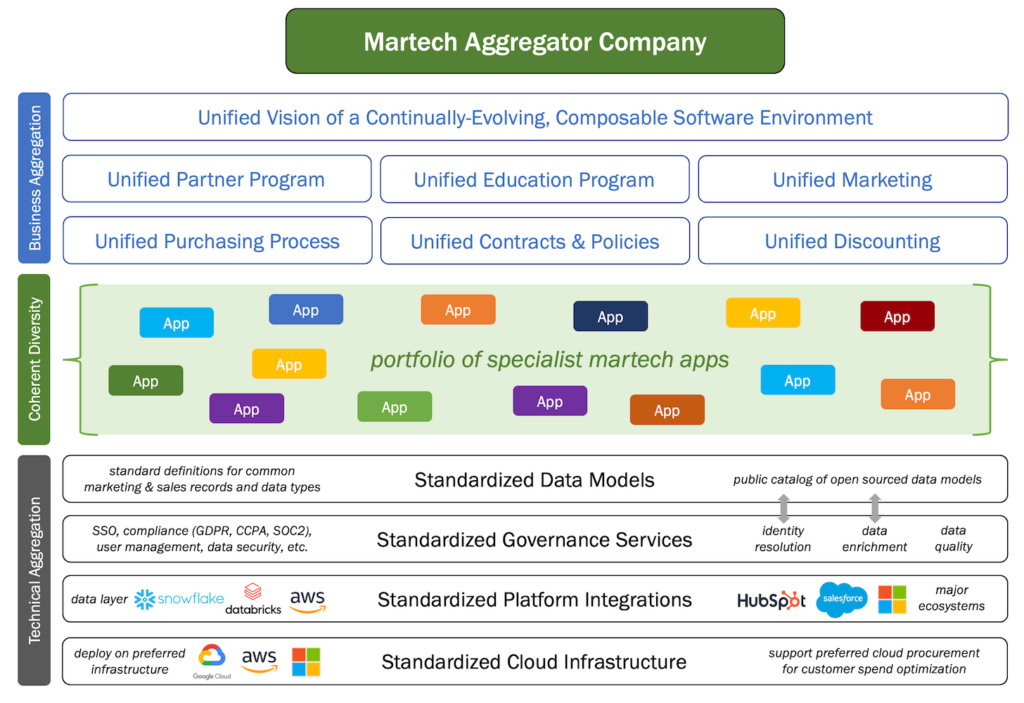Tag management, at its core, is a relatively straightforward marketing technology — but one that has taken on new life with the rise of the home-grown, heterogeneous marketing cloud.
First, a brief orientation on tag management:
Many marketing software applications require marketers to insert little snippets of code — “tags” — into their web pages to enable things like visitor analytics, remarketing, A/B testing, visitor profiling, personalization, etc. Large sites can end up with dozens of these things.
While adding or editing a tag isn’t rocket science, it is an enormous pain in the rear to do it manually at speed and scale. And it has to be done carefully — a malformed tag, such as a missing quote or semicolon in the wrong place, can break your pages. Hunting down which tag broke which page can be a study in tedium. And if you have to rely on a third-party to do this for you — your IT department or an external agency — the time required to make a “simple” tag change can seem interminable. (“We’ll schedule that urgent tag change for you, mmm, two weeks from Thursday, okay?”)
The solution: tag management systems. Insert a single “container tag” on all your pages once. The tag management system then uses that to dynamically insert (“fire”) all the other tags you might want on a particular page. You can control which tags are fired on which pages in your tag management console — no need for anyone to go digging into the pages themselves to add or edit tags. It makes it faster, easier, and (to a certain degree) safer.
That’s helpful. But the real game changer in tag management was the data layer.
Think of the data layer as a shared whiteboard on your pages that your different marketing software packages can read and write to. You can write (“push”) into the data layer all kinds of programmatic information about the page, the visitor, the context in which they arrived at that page, their behaviors on the page, etc. The tag management system — and all the tags for other marketing applications contained within it — can then read that shared data.
Through this shared data layer, tag management lets you synchronize data among many different marketing software packages — without those packages having to talk directly to each other.
It’s a clever integration technique.
And it’s why I think of tag management as quintessential marketing middleware. It’s marketing software that helps your other marketing software work together better.
Of course, it has limits. It can only synchronize data shared through that data layer. Once the data gets shipped off to different destinations, those copies of the data may diverge independently. And configuring all the reading and writing of data can grow complex, particularly if you have different rules for what data is being shared on different pages.
But there have been two clusters of innovation lately in major tag management systems — companies such as Tealium, Ensighten, and Signal (formerly BrightTag) — that are pushing these limits:
- Slick user interfaces, such as drag-and-drop integration with hundreds of other marketing software products and graphical ways of taming the complexity of all the rules for when and where to fire tags and which data to pass along to each.
- In addition to acting as the switchboard for routing data to other marketing systems, distilling all the data themselves into a master repository of audience insight.
There’s intense competition in that second cluster. CRMs, marketing automation platforms, data management platforms (DMPs), customer data platforms (CDPs), etc. are all vying to be the “go to” source for that insight. But by inherently being on the front-line across a wide spectrum of digital touchpoints, tag management is in a strategically advantageous position to innovate with all the data it has access to first-hand.
It’s “marketing middleware with benefits” — as it not only helps distribute data across the rest of your marketing technology stack, it also delivers its own value-added insights to the river of data flowing through it.
Note that several of the big marketing cloud providers — notably Adobe and IBM — have incorporated tag management into their portfolios. However, not all of the marketing cloud players have their own tag management, and few seem to have leveraged the second-order effects of that layer to same degree as their leading independent counterparts.
It will be interesting to see how this space evolves over the next year. Perhaps even more interesting now that Google is offering its own free tag management solution too, another step into the enterprise beyond its foothold with Google Analytics. (Am I crazy to think that Google may yet enter the full “marketing cloud” business itself someday?)
But the independent tag management providers have now become some of the greatest advocates for the “build your own marketing cloud” movement. They are, indeed, a key enabler for companies to make heterogeneous marketing technology environments work — which, as I’ve written before, gives the marketer more control over their own destiny. This post was inspired by reading a great little guidebook by Tealium, Five Reasons to Build Your Own Marketing Cloud, which includes the illustration featured at the top of this post, and succinctly makes the BYOMC case.
I should also mention that Tealium has signed on as a sponsor for MarTech. And if you’re interested in the trade-offs of whether to build or buy your own marketing cloud, you should come to the event to hear Travis Wright, an independent marketing technology advisor, give a terrific presentation on that very question.




Awesome overview as usual, Scott. Like I said on twitter earlier, you beat me to the punch on an article like this!
I think that the “tag management as marketing middlware” analogy is a very strong one. (Also, we at IBM like to think we know a thing or two about middleware.) What I think is different about the martech scenario is, basically, that it’s tough competing with free.
All of us in the enterprise digital analytics market are constantly competing, implicitly or not, with the free version of Google Analytics to show ROI. We can do that because our paid products are not fundamentally the same as GA’s free one. But the TMS vendors now suddenly have the same challenge vis-a-vis DDX (IBM), DTM (Adobe), and GTM (Google), and I don’t know that they can say the same. All of those analytics vendor TMS systems are free to clients, serve competitors’ tags as well as our own, and are very high-quality.
This creates a big and relatively new competitive disadvantage that is forcing the TMS guys to pivot now to offer the new products we’ve seen from the very TMS vendors you named.
The Tealium example in that graphic above is telling. This company is already spending a significant amount on many martech solutions, and now they’re going to spend a couple hundred thousand more on a data layer technology that they can get for free elsewhere? It’s going to be tough defending that spend, and an even tougher sell.
Maybe I’m wrong! Obviously I’m biased. Looking forward to finding out either way.
Thanks, Blair!
Yes, “free” is a heck of a disrupter — as any web analytics vendor would surely attest. I do think the web analytics space is somewhat analogous. The dynamics between Google Analytics and paid products could be instructive for how tag management may evolve.
As I mentioned in the post above, I do see the independent tag management firms innovating in two main directions:
1. Better interfaces and capabilities for managing tags, especially in complex enterprise environments. I haven’t looked at ATM or DDX’s free tag manager, but I’ve looked enough at Google’s to know that there’s a lot of room for improvement there. The plumbing of tag management may be commoditized, but the management layer still has opportunities for differentiation.
2. Using tag management as a vector for other products that leverage the data from those touchpoints first-hand. These innovations aren’t tag management per se, but they open up some interesting possibilities for where the independent tag management firms may evolve.
On top of that, there’s always the difference between “free” and “paid” — that with paid, you can get things like support, SLAs, incentives for ongoing development, concrete promises about your data, complementary products and services, etc. Companies such as RedHat in Linux to Acquia in Drupal show that there are interesting possibilities there too. How much of that will prove relevant to tag management? An open question.
Perhaps someone from Tealium or another independent tag management provider would care to comment?
By the way, about DDX: is it free if you buy ExperienceOne, or free for anyone to use? If the latter, where can I find that on the web? I’ve tried Google searches and navigating ibm.com to no avail. Entirely possible that it’s user error on my part, but if IBM wants to use free tag management as an entrance into a broader cross-section of enterprise marketing stacks, it might be worth making it a little easier to find.
Excellent points. I summed up a lot of my views in the blog post that just went up (where I credited your inspiration!). DDX is free for ExperienceOne clients today, but I’ll let my PM colleague Aubrey, who owns DDX, contact you directly with all the details.
FWIW, my post just went up: http://www.bullishdata.com/2014/06/16/land-expand-future-tag-management/
“Free if you buy our high-end marketing suite” is quite different than “free.” I believe the technical term for that is “bundled.” What happens if someone leaves ExperienceOne? Do they have to give up their existing tag management configuration at that point?
That’s like saying the chocolates at a fine dining restaurant are “free,” so why should anyone buy chocolates at the store? How is Godiva not out of business? Well, ahem, you have to buy this really expensive dinner first… 😉
Not to say that bundled isn’t disruptive too, but that’s very different than what Google Tag Manager is doing.
I am intrigued about your qualification about “today” though. It would be very interesting to see what IBM might do if it played a card or two from Google’s hand…
Many great points raised in that post of yours, Blair!
Excellent post Scott. In response to this comment thread, I will suggest that Tag management systems (TMS) are more close to ESB (Enterprise Service Bus) than middleware (not there yet but eventually they will be). If you look at evolution of middleware solutions into ESB, you can draw following parallels between between TMS and ESB,
1. Data layer is like messaging (data sharing) and it will eventually become a standard commodity (W3C) hence less of differentiator.
2. In future TMS will be more focusing on ESB like features like data enrichment, data transformation, data activation, data security and so on. Like ESB, orchestration, versioning and event handling will remain core of most TMS solutions.
You can find a more detailed follow-up to your article here,
http://abhishek-tiwari.com/post/marketing-middleware-and-data-layer
Great post Scott.
On the importance of independence, there’s a built-in incentive for companies like Tealium to build a strong neutral playing field where the whole martech ecosystem can be on an equal footing. I think you’ll find that this incentive drives strong innovation around the depth and variety of support for players in the space.
Without addressing the specific differences of free or bundled tag management solutions compared to independent TMS solutions, one can see a clear difference in motivation: we do and must work across all clouds and independent point providers to show the value of a unified stack.
I have seldom come across anyone who has a 100% pure single vendor stack. By using a neutral vendor to manage cross-cloud application tags, companies can create their own digital marketing clouds and improve the effectiveness of their existing martech choices.
Great post Scott. The ability of the data layer to synchronize data among marketing software packages is compelling. At Ensighten we take this approach a step further by enabling customers to also activate their data in channels that lack native access to these data sets. In other words, it’s not only about using the data layer to syndicate data to email service providers or demand-side platforms and have them act on that data for you. It’s also about activating onsite, offsite and offline data sets in real-time while the customer is still on your website. For example, would you opt for a site abandonment retargeting solution if you could prevent the abandonment in the first place by using omni-channel data to personalize the experience more effectively?
It’s time to rethink what tag management and the data layer have to offer. Enterprise-level TMS have evolved; they are now a strategic foundational layer that helps leading enterprises collect, own and act on data across all digital touchpoints.
Thanks for the shout out, Scott. This is an exciting space with a lot of moving parts. My presentation will help remove some of the “fog” from the “Marketing Cloud”.
Hi Scott – good stuff. I agree that tag management software can be very valuable. As you know, I recently looked at the adoption of sales and marketing software and programs at 200 mid-market companies. It’s not in my report, but tag management software was almost non-existent. Literally 1% of companies were using it. Just another useful tool that needs more evangelizing.
http://revenueassociates.biz/download-revenue-opportunities-study/
I too am amazed at how few companies leverage Tag mgmt solutions as well. But, the real game changer is the Data Layer helping you orchestrate a dialogue with a customers across Touchpoints and different channels. The ability to integrate multiple point solutions is so so critical in creating a differentiated customer experience and managing the dialogue with the customer on their terms. The customer is in control! They will define when and how they engage with you. Your job is to be there, ready and able to deliver at any given “moment of truth” having knowledge of the customer.
Useful! Also, don’t miss these 100 useful tags to deploy in an e-commerce site. Click here -> http://www.softcrylic.com/blogs/100-useful-tags-deploy-e-commerce-site/